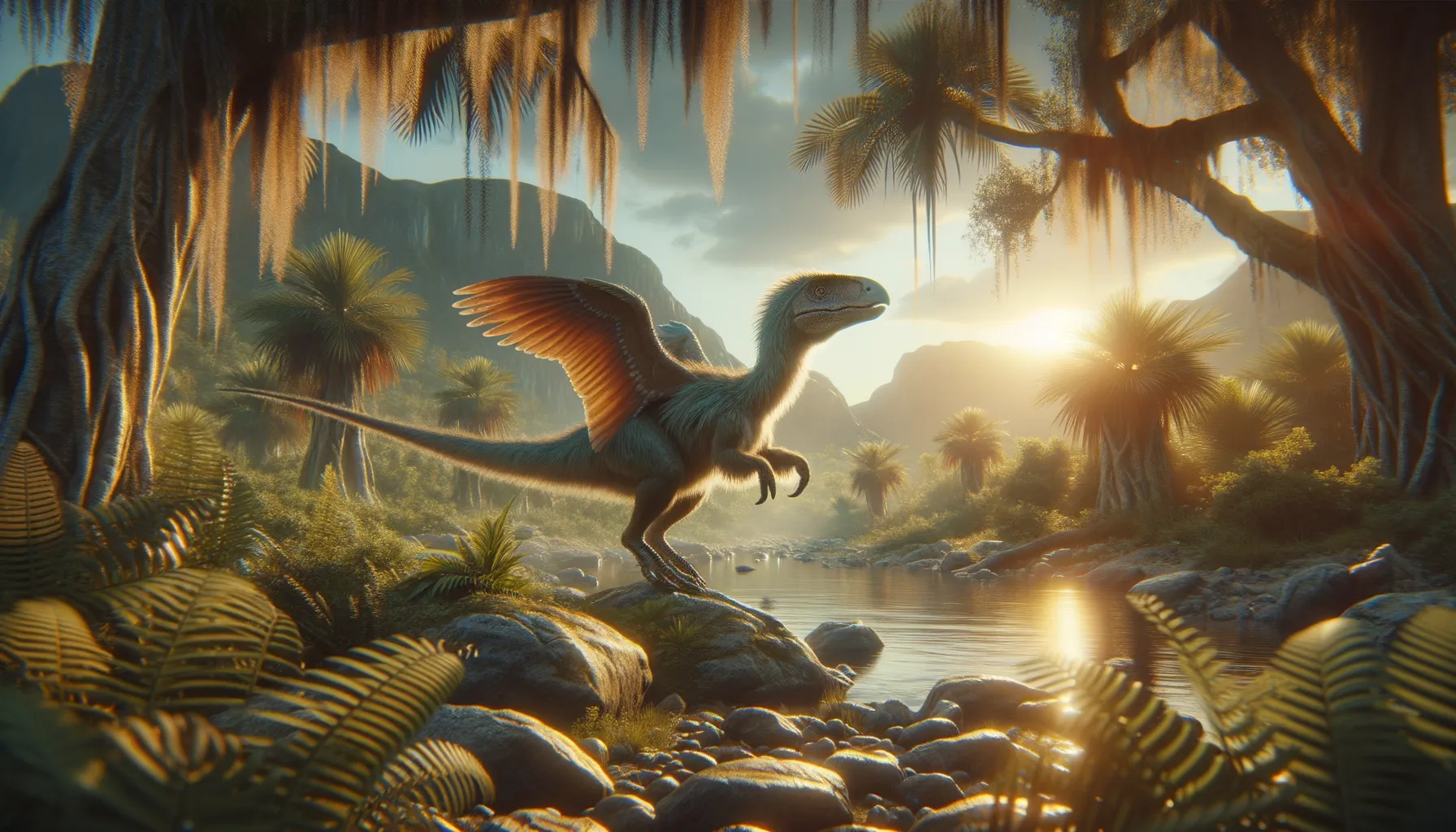
Archaeovolans
A flight into the past's evolutionary miracle!
Period
Cretaceous
Length
Around 85 centimeters in length including its tail.
Height
Roughly 30 centimeters tall, about the size of a crow.
Weight
Approximately 1 kilogram, similar to a large pigeon.
Archaeovolans was a small, bird-like dinosaur that lived during the early Cretaceous period. It had notable characteristics of both dinosaurs and birds, such as feathers and a lightweight body, which facilitated flight. Discovered in China, its fossils provide valuable insights into the transition from non-avian dinosaurs to birds. This species highlights the evolutionary innovations in feathers and wings that contributed to the development of flight in avian ancestors.
Diet
Archaeovolans is believed to have been an omnivore, feeding on small animals, insects, and possibly some plant material. Its diet would have varied according to the availability of prey and food resources in its environment.
Hunting
Archaeovolans likely used its feathers for short flights or gliding to hunt for small prey among trees. Its agile movements suggest it was capable of catching insects and small vertebrates, which would have been a primary component of its diet.
Environmental challenges
Living during the Cretaceous, Archaeovolans faced challenges such as predation from larger dinosaurs and competition for resources with other small theropods. Extreme weather conditions, such as droughts or heavy rains, would have posed additional threats. The need to find suitable nesting sites was crucial in providing safety for their eggs and young.
Speed
Believed to have been moderately fast, aiding in flight.
Lifespan
Estimated to have lived for around 10 to 20 years.
First discovery
First described in the year 2002 based on fossils found in Liaoning, China.
Fun Facts
- Archaeovolans was a small dinosaur, similar in size to a crow, showing how diverse dinosaur sizes were.
- This dinosaur is famous for its bird-like traits, having feathers and likely being capable of flight.
- The name Archaeovolans means 'ancient flyer', highlighting its role in the story of how some dinosaurs evolved into modern birds.
- Fossils of Archaeovolans have provided important clues about the dinosaur-bird connection, making it a favorite among paleontologists.
- Archaeovolans lived during the Late Cretaceous period, roughly around 85 million years ago, sharing the earth with giants like Tyrannosaurus rex.
- The discovery of Archaeovolans helped scientists understand more about the evolution of feathers and flight in dinosaurs.
- Archaeovolans' fossils were mainly found in what is now China, a hotspot for many feathered dinosaur discoveries.
Growth and Development
Like other feathered dinosaurs, Archaeovolans hatched from eggs and likely grew rapidly to reach maturity. Its growth patterns would have been influenced by environmental factors and food availability, dictating the overall speed and efficiency of its development. Juvenile Archaeovolans may have possessed adaptations that allowed them to quickly achieve independence.
Habitat
Archaeovolans inhabited lush forests and areas near water bodies, which offered abundant food resources. The presence of trees was crucial, as they provided both shelter and opportunities for hunting. These habitats supported a diverse range of plant and animal life, making them ideal homes for Archaeovolans and other similarly-sized creatures.
Interaction with other species
Archaeovolans likely coexisted with a variety of other species, including small mammals, insects, and other feathered dinosaurs. It may have competed with similar-sized animals for food and nesting sites. Symbiotic relationships might have existed, such as those with plants, that supported their diet indirectly by attracting prey species.
Natural lifespan
Its natural lifespan was between 10 to 20 years, depending on environmental conditions and food availability.
Reproduction
Archaeovolans reproduced by laying eggs, like other theropods and early birds. Nesting sites were carefully selected to ensure the safety and warmth of the eggs. Parental care might have included guarding the nests and possibly caring for the young after hatching.
Social behaviour
It's likely that Archaeovolans exhibited social behaviors, potentially living in small groups or family units for protection. Communication among individuals may have involved vocalizations and visual displays, particularly during breeding season. Collaboration in locating food might have been advantageous in their diverse habitats.
Fossil locations
Fossils of Archaeovolans have primarily been found in Liaoning Province in China, renowned for its rich deposits of feathered dinosaur fossils. The region's exceptional fossil preservation conditions provide critical evidence of the transition from dinosaurs to birds. Ongoing excavations continue to yield important discoveries related to this transitional species.
